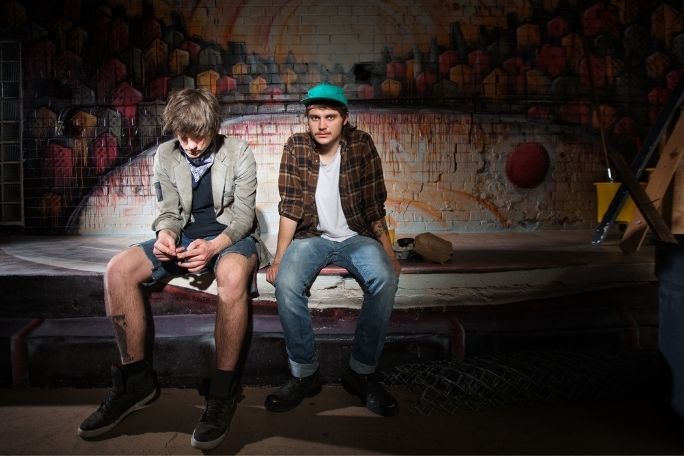Lesson summary
Students view a YouTube clip that explores the concept of couch surfing, and reflect on the situation faced by many young people who are experiencing homelessness. Students consider the impact of couch surfing using data collected around the issue of homelessness. Students explore the idea that couch surfing is an unstable form of accommodation and consider other, more long-term solutions to youth homelessness. Students then create an advertisement raising awareness about youth homelessness to encourage support for young people experiencing homelessness.
Key ideas to explore:
- Negative stereotypes are sometimes attached to people experiencing homelessness.
- A more realistic view of the problem of youth homelessness is needed in order to help address the issue.
- There are many ways to effectively challenge and address negative stereotypes about youth homelessness.
Lesson guides and printables
Lesson details
Curriculum mapping
Australian Curriculum content descriptions:
- Critically analyse and apply health information from a range of sources to health decisions and situations (ACPPS095)
- Plan, rehearse and evaluate options (including CPR and first aid) for managing situations where their own or others’ health, safety and well being may be at short or long term risk (ACPPS091)
General capabilities: Critical and Creative Thinking, Ethical Understanding, Literacy, Personal and Social Capability.
Syllabus Outcomes: PDHPE5.2, PDHPE5.6, PDHPE5.7, PDHPE5.8, PDHPE5.12, PDHPE5.15, PDHPE5.16.
Unit of work: THE OASIS – HPE
Time required: 60 minutes
Level of teacher scaffolding: Medium – facilitate discussion.
Resources required
- Student Worksheet – one copy per student OR computers/tablets to access the online worksheet
- Device capable of presenting websites/videos to the class and access to THE OASIS documentary on Vimeo
Additional info
This resource has been adapted from ‘Teaching Social Issues Through English’ developed with the English Teachers Association NSW and the ‘Youth Homelessness Matters Resource’ developed by Janice Atkin. You can find these resources here.


Welcome back!
Don't have an account yet?
Log in with:
By signing up to Cool.org you consent and agree to Cool's privacy policy to
store, manage and process your personal information. To read more, please see
our privacy policy here(Opens in new tab).
Create your free Cool.org account.
Many of our resources are free, with an option to upgrade to Cool+ for premium content.
Already have an account?
Sign up with:
By signing up to Cool.org you consent and agree to Cool's privacy policy to
store, manage and process your personal information. To read more, please see
our privacy policy here(Opens in new tab).